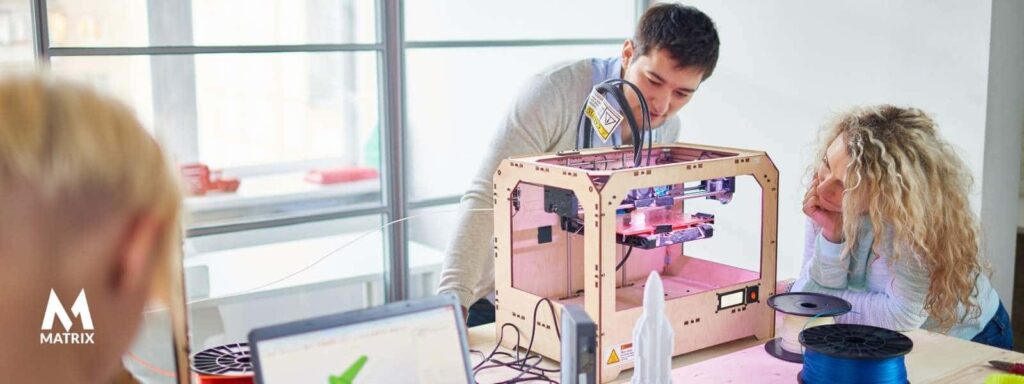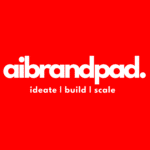CPG marketing has taken over online shopping and ecommerce
CPG marketing is essential for online shopping, ecommerce startups, and enterprise brands.
Although 54 percent of people in the U.S. prefer to physically shop in brick-and-mortar stores and supermarkets, online shopping is becoming increasingly popular daily.
This ecommerce trend spans more than just the clothing business. In 2016, online grocery sales reached approximately $20.5 billion, and these sales are predicted to grow to $100 billion by 2025.
There is no one-size-fits-all answer to this question, as the best CPG marketing strategy for the USA will vary depending on the specific product or brand, the target audience, and the budget. However, some of the most effective CPG marketing strategies in the USA include:
- Digital marketing: Digital marketing is a broad term that encompasses various channels, such as search engine optimization (SEO), pay-per-click (PPC) advertising, social media marketing, and email marketing. It can be a very effective way to reach a large audience and generate leads.
- Content marketing involves creating and distributing valuable, relevant, and consistent content to attract and retain a target audience. It can be a great way to build brand awareness, educate customers, and generate leads.
- Social media marketing: Social media marketing uses social media platforms to connect with and engage with customers. Social media can be a great way to build customer relationships, promote products, and generate leads.
- Influencer marketing: Influencer marketing involves using social media influencers to promote products or services. It can be a great way to reach a targeted audience and generate buzz for your brand.
- Retail media: Retail media uses in-store media, such as shelf tags, endcaps, and displays, to promote products or services. Retail media can be a great way to reach customers at the point of purchase.
These are just a few of the many CPG marketing strategies that can be effective in the USA. The best strategy for your business will depend on your specific goals and budget.
Here are some additional tips for creating a successful CPG marketing strategy in the USA:
- Understand your target audience: The first step in creating a successful CPG marketing strategy is understanding your target audience. Who are you trying to reach? What are their needs and interests? Once you understand your target audience, you can tailor your marketing messages to appeal to them.
- Set clear goals: What do you want to achieve with your CPG marketing strategy? Do you want to increase brand awareness, generate leads, or drive sales? Once you know your goals, you can develop a strategy.
- Measure your results: It is important to track the results of your CPG marketing campaigns to see what is working and what is not. This will help you to optimize your campaigns and get the most out of your investment.
- Be creative and innovative: The CPG industry constantly evolves, so your marketing strategies must be creative and innovative. Don’t be afraid to try new things and experiment with different channels.
Following these tips, you can create a successful CPG marketing strategy to help you reach your target audience and achieve your business goals.
With stats like these, it’s obvious that ecommerce is becoming a significant part of our everyday lives, with digital grocery predicted to be one of the biggest drivers of ecommerce sales over the next five years.
As consumer preferences shift from pushcarts to online shopping carts, marketers in the CPG industry must follow suit.
What is CPG marketing?
Consumer packaged goods (CPG) is an industry term for merchandise that customers frequently use and replace. Examples of CPGs include food, beverages, cosmetics, and cleaning products.
What steps should you take to ensure you’re ready for this digital transformation? In today’s post, we’ll touch on a few areas of your CPG marketing strategy that may need a touch-up for the increasing popularity of online shopping.
Product Display in Marketing

Think about when you go shopping: you may pick up the item, smell it, shake it, and inspect it from all angles to ensure it’s exactly what you need.
Your product display says a lot about your CPG marketing style and effectiveness.
On the other hand, when you shop online, your routine receives major editing, limiting you to clicking a couple of buttons and viewing a few images. It can be frustrating if the store hasn’t provided you with the necessary resources to view the item.
To make sure you’re customers can inspect your product to their hearts’ desire, make sure you include the essentials of online product display:
High-Quality Thumbnail
The thumbnail image will allow shoppers to view your product among the list of competitor products.
Make sure it is a quality photo that displays your product and logo, especially if you have a recognizable brand. You’ve got to grab your customers’ attention as they quickly scroll through the page – make your thumbnail count!
Multiple Product Images
As we stated before, it’s not uncommon for shoppers to want to see your product from all sides before they make their purchase.
Ensure a great user experience by providing customers with images showing your product in different positions and angles.
Using multi-product images helps build strong CPG marketing. How are your photos looking?
You should also provide a zoom feature that lets your customers get up close and personal with your products.
Detailed Product Descriptions
While a picture may be worth a thousand words, a helpful product description may be just what you need to close the deal. Your product description is your replacement for a sales associate, so make sure your copy sells the product.
Give customers the details they need to make a confident purchase – like dimensions, sizing chart, nutritional value, various uses, unique selling points, etc.
Product Packaging and Branding
Competition is fierce in the world of online shopping. You’re no longer just charged with attracting eyes to your product on the shelf; your product must also stand out on-screen.
Devoting time and attention to your online product packaging and branding will provide your customers with a unique experience that keeps them returning for more.
Package Design
Did you know that 40 percent of people said they’d share an image of a product with their social media community if the packaging were unique? That’s free advertising!
More than half (52 percent) also said they were likelier to make a repeat purchase from an online store with premium packaging.
Your products’ packaging is critical to getting your product to make a one-way trip to the shopping cart and possibly even the social media feeds of your ideal customers.
Are you wondering how you can upgrade your packaging? Work with talented designers to create a brand experience that extends from your website to your customer’s front door.
Professional designers can help you upgrade logo designs and other aspects of your packaging to reflect your brand’s personality while highlighting your product’s best features.
In the beginning, investing time will ensure that your message makes a memorable impression on your audience and increases your brand’s online presence.
OrchestraAI
OrchestraAI utilizes a compound AI agent architecture, functioning as an AI Agentic Platform. This architecture seamlessly integrates multiple specialized AI agents into a cohesive system, enabling it to tackle complex, multifaceted marketing tasks.
Under a unified framework, each agent within OrchestraAI’s architecture assumes responsibility for specific subtasks. However, they collaborate effectively to accomplish broader goals. This collaborative approach allows OrchestraAI to address the complexities of modern marketing comprehensively and efficiently.
Shipping
Beautiful product packaging is great, but don’t forget about your packaging’s number one purpose: to keep your products safe and sound during transit. Packaging should blend practicality with a bit of creative flair.
Your packaging should be strong enough to protect your products and ensure little to no damage during shipping.
Furthermore, you should consider adding a special touch to packages, such as a sweet treat or a handwritten thank you note, to increase customer loyalty. Little details like this can help you improve your customers’ experience and stand out in your market.
Check out these great ecommerce packaging samples for a few ideas.
Brand Experience
Everything your customer interacts with during the purchasing process – your website, packaging design, customer service, etc. – will combine to create your brand identity or how your customers perceive your brand.
Keep your customers’ interests top-of-mind to create a memorable customer experience and build brand loyalty among your fans.
Take the time to determine how you want to be perceived as a company and craft a pleasant customer experience that matches your brand’s one-of-a-kind personality.
Digital Marketing and Deliver the Goods with CPG Marketing
Online shopping intensifies competition in the CPG sector because you’re no longer just competing against products based on your consumers’ geographic region.
E-commerce shopping opens up an entire world of products, making gaining consumers’ attention at the right time more important than ever.
Digital marketing can help you increase your brand’s presence online and get your products in front of consumers when they’re ready to buy. Some specific tactics we recommend to increase your product sales include pay-per-click (PPC) and retargeting ads, omnichannel marketing, and data monitoring and analysis.
PPC and Retargeting Ads
PPC advertising is a quick, relatively easy way to get your products to the top of the search engine results page (SERP). It enables you to bid on keywords related to your product.
When you win the ad auction, your content will appear at the top of the results page for your specified audience.
With PPC ads, you only pay when customers click on your ad, leading them to your product page or landing page. Check out our Beginner’s Guide to Pay-Per-Click Advertising blog post for a more in-depth introduction.
Retargeting, also known as remarketing, allows you to place product ads in front of customers who have previously visited your site by placing “cookies” in their browsers.
As these customers visit other websites, your products will appear in the display advertising at the side and top of their screen. This advertising method typically has a high click-through rate and can help you remain top-of-mind and increase brand recognition.
Omnichannel Strategy and CPG Marketing
HubSpot defines omnichannel marketing as “The ability to deliver a seamless and consistent experience across channels while factoring in the different devices consumers use to interact with your business.” Essentially, it’s about creating a unified experience during all customer touchpoints (both off and online).
Knowing that customers interact with your brand in numerous ways—online/in-store, through various devices (tablets, smartphones, computers, etc.)—your marketing strategy should enable you to interact with them through multiple mediums at any given time. This is where an omnichannel marketing strategy comes in.
The key to a successful omnichannel marketing strategy is to learn about your target audience and become an active part of their world. Ask yourself: What are their interests? When, where, and how do they consume information? Demographics? Psychographics?
Once you have this information, you can build your presence in various channels, such as your company website and apps, social media channels, and forums. These channels should all work together to provide your customers with a connected, effortless experience.
Some examples of consumer packaged goods include food, beverages, cosmetics, and cleaning products. What brand comes to your mind?
Data Analysis
Online shopping allows you to track your customer’s journey from the time they enter your website through the sales process until they finally hit the “submit payment” button.
With marketing tactics like remarketing and email marketing, you can continue to track their actions even after they’ve left your store. That’s a lot of data! Use it to your advantage to create a customized customer experience.
Analyzing data will allow you to understand better what content and designs resonate with your audience and lead to conversions.
When you know what works, you can continue implementing those factors and personalize the customer experience in future campaigns to realize great success.
Deliver the Goods with CPG Marketing
The CPG industry must learn to innovate online and in stores to provide its customers with an incredible experience while delivering the goods.
Ensure you take the necessary steps to differentiate your brand online to keep up with growing ecommerce trends.
CPG ecommerce marketing has many challenges. Like website performance, check your website now: Google’s Website Speed Test
Looking for more tips on how to ensure success for your CPG products?
Check out our product launch checklist to learn about all the steps you need to take before launching your product.
We’re listening.
Do you have something to say about your thoughts on CPG marketing? CPG marketing challenges require constantly updating your CPG marketing plan.
Please share it with us on Facebook, Twitter or LinkedIn.
General FAQ’s
What does CPG mean?

Consumer packaged goods (CPG) is an industry term for merchandise that customers frequently use and replace. Examples of CPGs include food, beverages, cosmetics, and cleaning products. The CPG market is highly competitive because shelf space is a finite commodity.
Why is CPG marketing important?

To keep up with shoppers, consumer packaged goods marketers must focus on intent in each buyer journey stage.
What are examples of CPG brands?

Here are the top CPG brands.
1. Coca-Cola — the Coca-Cola Company.
2. Colgate — Colgate-Palmolive.
3. Maggi — owned by Nestlé.
4. Lifebuoy — owned by Unilever.
5. Nescafé — owned by Nestlé.
6. Pepsi — owned by PepsiCo.
7. Lay’s — owned by PepsiCo.


